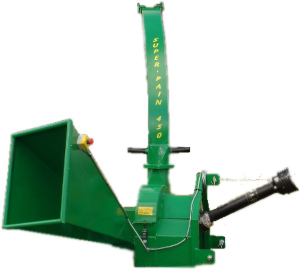Heating by contact with the fermenting mass
or how to heat with wood without lighting a fire!Heating with wood... without burning wood. A utopia?
Not entirely! The Jean PAIN Methods make it possible to extract heat without degrading the material, through simple contact with the fermenting mass...
History
In 1975 Etienne BONVALLET joined Jean PAIN, his uncle, to participate in the development of the Jean PAIN Methods, particularly on the energetic and mechanical subject.
Jean PAIN checked the proper functioning of the fermentation by dipping a metal bar into his piles of fermenting brushwood; the heat of the bar indicated to him that the pile was fermenting well.
He then decided to recover this heat to heat water.
For this purpose, Etienne BONVALLET and Jean PAIN created a pile of 50 tons of chipped wood, branches and brushwood, in which they installed a network of pipes. (page 49 of the book "The Methods of Jean PAIN")
This network was connected to a natural water source that flowed 4 l/min at 10°C (50°F).
At the network outlet, the water was heated to 60°C (140°F).
They continued this experiment for 6 months without either the water temperature or the temperature of the pile dropping.
Development
Building on this experience and as Jean PAIN wanted to continue his agricultural experiments in a greenhouse, it was decided to heat this greenhouse with fermenting material.
In their first experiment, the network consisted of straight stainless steel tubes connected by flexible pipes.
Since these connections caused leaks, Jean PAIN decided to use flexible HDPE pipes wound in a spiral inside a circular pile of 115 m3. (page 53 and following of the book "The Methods of Jean PAIN").
This installation made it possible to maintain a temperature difference of more than 10°C (50°F) with the outside in a 210 m3 greenhouse tunnel.
The installation worked for a whole season, but showed its weaknesses when the pile was dismantled.
Indeed, in this configuration, it is difficult to dismantle the pile without risking damaging the flexible pipes turned fragile by the heat inside.
Several techniques will be tested in the following years, in order to resolve the problems encountered.
All will show their weaknesses and especially their prohibitive cost.
Today, we recommend a simpler, less expensive installation, allowing the mechanical handling of the material without major risk of damaging the system. This installation has a lower, but nevertheless sufficient, efficiency.
The typical installation would be as follows: a water stock (plastic tank) installed permanently and connected underground to the heating installation, so that it can be covered with freshly chipped material. The material can be easily recovered without the need to dismantle the installation at the end of fermentation.
We found that the water had to remain in contact with the fermenting mass for one hour to heat up to the temperature of the heart of the pile, therefore, the tank must have a capacity equivalent to one hour of flow rate of the heating installation.
Details
By a quick calculation, during the first test, we estimate the power produced by 50 tonnes of material to be ~14 kW, i.e. ~250 W per tonne of material or ~60 W per m3.
The whole point of this technique lies in the extraction of a significant amount of energy without having consumed the slightest quantity of dry matter. But then, where does the energy come from?
In our opinion, it is only the residual energy of the bacterial activity responsible for fermentation.
This energy could come from the water consumed by the bacteria, because it has been observed that if the pile dries out, fermentation stops and the temperature drops... But these are only hypotheses.
It should be noted that the production of energy in Les Méthodes Jean PAIN is not, and should never be, the primary objective of the production of fermented chipped wood. It is primarily about producing an organic amendment of very high value for soils.
The recovery of thermal energy by contact with the fermenting mass is only a bonus in the context of the production of this amendment, and is only profitable in this context.
Our chippers guarantee a perfect granulometry for both drying by fermentation and using without any problem in an automatic woodchips boiler.
You can contact us if you're interested and want more information.
And if you want to discover how you can heat a place with wood but without burning wood, you can discover how Jean PAIN developped the heating by contact with the fermenting mass.


